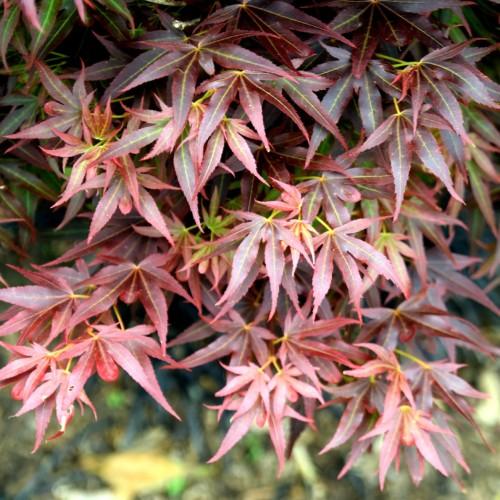
Otake Japanese Maple
Acer palmatum 'Otake'
Cycle:
Perennial
Watering:
Frequent
Hardiness Zone:
6
Sun:
full sun,part shade
Leaf:
Yes
Growth Rate:
Low
Care Level:
Medium
watering
Otake Japanese Maple plants should be watered frequently and consistently. It is best to water the plant deeply every 2 to 3 days during the hot and dry summer months, so that the soil remains moist and won't dry out completely. During cooler months, the plant can be watered less frequently, around once a week. It is important not to water the plant too much, as waterlogged soil can prevent the roots from getting the oxygen they need. To check if it is time to water the plant, stick your finger into the soil about an inch or 2 deep; if it is dry, then water.
sunlight
For the Otake Japanese Maple, the optimum amount of sunlight is 4 to 6 hours of direct sun per day. The best time of day for sunlight is during the morning hours. Too much direct sun during the peak heat of the day can be detrimental to the health of this species of Maple. During the summer months, the Otake Japanese Maple will benefit from a few hours of light shade in the afternoon to protect it from the heat.
pruning
Otake Japanese Maple should be pruned lightly in early spring before new growth appears. Pruning should be done with small sharp shears – rather than loppers or hedging shears – to encourage a more refined branch structure. To keep the plant compact and full, lightly shape it by removing some of the new shoots growing from the previous year's growth. When removing shoots, it is likely there will be small sprouts around the base. These can be pruned off early to prevent them becoming overgrown. Do not prune too severely as this can damage the tree. Aim to reduce each branch by about 1/3.
